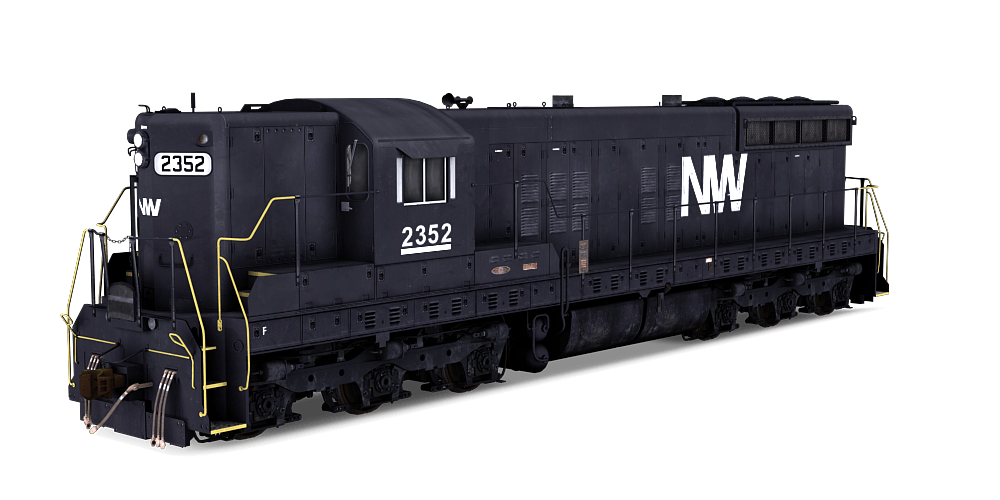The Fort Wayne Railroad Historical Society, Inc announces Project 358, an effort to restore our historic SD9 class diesel locomotive. The project will restore the locomotive’s cosmetic appearance as it ran on the Nickel Plate Road and eventually return it to operational condition. The debut of the SD9 in 1954 marked the next step forward for EMD's Special Duty line of six-axle diesels, and introduced the new 567C prime mover delivering 1,750 horsepower. Ideal for demanding assignments in helper, yard, transfer and heavy freight service, with its weight spread over six axles, the SD9 was also well suited to branch line. EMD SD9 Sound Value Equipped Locomotive - RIO GRANDE #5307 - N Scale. With its six axles providing a smoother ride, the EMD SD9 proved popular with a variety of railroads. Manufactured in the late ‘50s, some are still running today on tourist lines. Bachmann’s model comes with the Econami SoundTraxx DCC sound decoder.
Review by Harry K. Wong/photos by the author

The decade of the 1950s witnessed the completion of the transition from steam to diesel locomotion on America’s railroads. What first began as a flirtation with diesel-electric switchers for shunting duty in the late 1920s soon turned into a rapid takeover of high-profile passenger trains and main line freight trains by streamlined multiple unit diesels, such as the EMD FT and EMD E-series passenger units. for both passenger and high-profile main line freight trains nationwide. However, little attention is devoted to what some might call the final wave of dieselization, when secondary and branchline trains were converted to diesel-electric motive power, using diesel road switchers.
This final phase began in earnest after World War II, led by the introduction of the Alco RS-1 in years prior, and the arrival of the EMD GP7 and other competitors to the marketplace by 1949. Some railroads needed greater tractive effort at lower speeds, and to meet that need and other requirements, six-axle road switchers from Baldwin, Alco and EMD were introduced – Alco with the RSD-4 and RSD-5, and EMD with their first six-axle road switcher, the SD7. The successor to EMD’s SD7 was the SD9 in 1954 with 250 additional horsepower via a more reliable 567C prime mover and additional improvements over its predecessor. By 1959, 471 SD9s had been produced for domestic use, with the Southern Pacific operating the largest fleet of SD9s, at 150 strong. Other major owners included the Duluth, Missabe & Iron Range with 90 units, and the Chicago, Burlington & Quincy with 80 examples.

The SD9s were truly all-purpose units on the Southern Pacific, with the first order of 30 units equipped with steam boilers for pinch-hitting in passenger service, and subsequent orders assigned to freight and helper service primarily in California and Oregon upon arrival on the system. All SP SD9s were delivered to the railroad in the classic black, silver and orange “black-widow” paint scheme.
Emd Sd9 Data Sheet

Emd Sd90mac
Walthers has recently released a new production of what began years ago as LifeLike’s Proto 2000 EMD SD9 locomotive. However, this latest release incorporates many refinements to bring this venerable model in many ways up to current standards expected for premium level HO locomotives. New for this latest production is a greater level of road-specific details that capture the high points most visible for each paint scheme. Liveries for this production include Elgin, Joliet & Eastern (solid orange); Chicago, Burlington & Quincy (Chinese Red); and Southern Pacific in two versions: as-delivered Black Widow, and modernized and upgraded SD9Es in scarlet and gray appropriate for the mid-1970s through the 1980s.

Our review sample is a non-sound, non-DCC WalthersProto SD9 finished to represent an SP SD9E. New details include an all-new pair of hood ends retooled for the Espee-specific triangular number board access doors and characteristic signal light cluster. As with most of the prototype SD9E fleet, a large rain hood now extends over the long hood just aft of the cab, along with a nicely rendered rectangular Farr paper air filter box immediately ahead of the dynamic brake section. About 25% of SP’s SD9E fleet was equipped with the distinctive Farr filter box…




